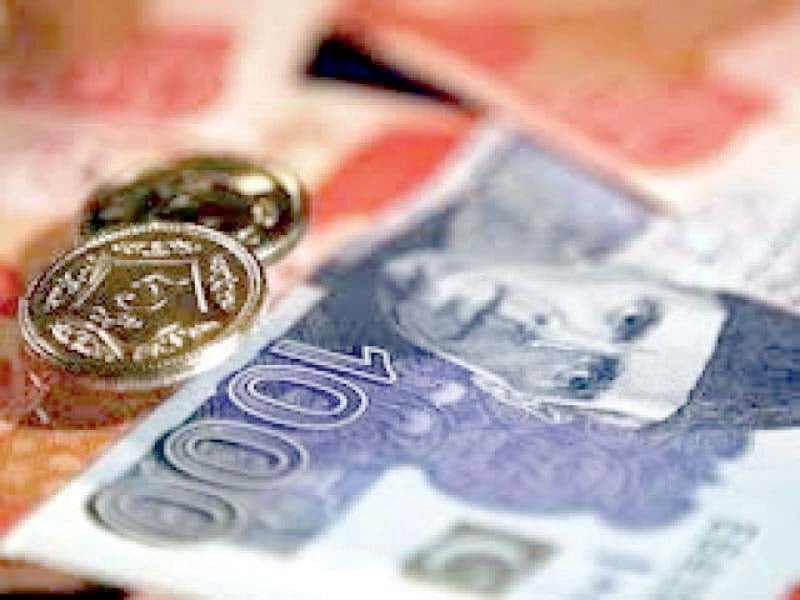Report card: A day before the budget, Pakistan Economic Survey reveals what went wrong M Haris
There were no real surprises when Finance Minister Muhammad Aurangzeb presented the Pakistan Economic Survey for 2023-24.
Days after returning from China where the government faced a hard time finding investors willing to put their trust in Pakistan, Mr Aurangzeb painted a bleak picture of the year that was for Pakistan’s economy.
There were few positives to take away from the past year. Pakistan’s economy registered moderate recovery reflected by a GDP growth of 2.38 percent against previous year’s contraction of 0.21 percent. Agriculture emerged as a main driver of economic growth, registering a growth of 6.25 percent on the back of double digit growth in output of major crops. Industrial and services sectors also showed resilience with each posting a growth of 1.21 percent. Current account deficit was kept under check, with marked improvement in foreign exchange reserves, reaching US$ 14.6 billion by end May 2024. The fiscal sector progressed towards stability, propelled by consolidation efforts and targeted reforms. Fiscal deficit remained manageable with an overall primary surplus. Rupee appreciated by almost 3.0 percent during the first eleven months.
But other than the small victories that the economy was able to steal, important indicators remained far from satiated. There was a decline in the investment-to-GDP ratio, sluggish large-scale manufacturing, and high public debt.
“It is important to see the level of inflation in 2022-23. [In this] year, the Pakistani rupee suffered nearly 29pc depreciation and the foreign reserves went to just two weeks of import cover,” the finance minister said during his presentation of the survey.
As the report itself pointed out, fiscal policy continues to grapple with the legacy of persistently high fiscal deficits and debt, resulting from unprecedented expenditures and moderate growth in revenues. This essentially means that the government has continued to have its expenses increase without having the necessary revenues to cover these costs.
The government’s efforts last year were focused on increasing revenues and many fiscal consolidation efforts were made over the last year. The problem, however, has remained rising expenditures mainly caused by higher markup payments.
Total expenditure increased by 36.6 percent in July-March FY 2024, compared to 18.7 percent last year. Within total expenditures, current expenditures grew by 33.4 percent due to a 54 percent increase in markup payments during the first nine months of FY24 In contrast, prudent expenditure management strategies led to non-mark-up current spending growth of 20.4 percent relative to mark-up expenditures. Total revenues grew by 41.0 percent in JulyMarch FY 2024, compared to the growth of 18.1 percent observed last year. The substantial increase in revenues has been primarily attributed to a sharp rise in non-tax revenues, which grew by 90.7 percent, driven by higher receipts from SBP profit, petroleum levy, markup (PSEs and others), and royalties on oil/gas, etc. Total tax collection (federal and provincial) grew by 29.3 percent during July-March FY 2024, compared to the growth of 16.5 percent last year.
There was some improvement in the matter of inflation but not by much. The CPI inflation for the period July-April FY 2024 recorded at 26.0 percent as against 28.2 percent during the same period last year. The other inflationary indicators like Sensitive Price Indicator (SPI) recorded at 30.2 percent as against 31.7 percent last year. Wholesale Price Index (WPI) recorded at 22.4 percent in July-April FY 2024 compared to 34.1 percent in the same period last year.
On the surface, debt management also seems to have been an area of improvement. There has been a substantial increase in interest payments on external debt and liabilities, which rose by approximately US $ 0.9 billion to US $ 4.2 billion during JulyMarch FY2024, compared to US$3.3 billion during the same period last year.
External public debt was recorded at US$ 86.7 billion at end-March 2024, revealing an increase of around US$ 2.6 billion during the first nine months of the current fiscal year. The debt stock of multilateral sources increased by US$ 1.7 billion. The main gross inflows included US$ 1.9 billion from the IMF program, US$ 1.4 billion from World Bank, US$ 657 million from ADB and US$ 300 million from AIIB. Multilateral loans are mostly contracted on concessional terms i.e., low interest rate and long tenor.
External public debt repayments were recorded at US$ 5.3 billion during the first nine months of FY 2024, of which, US$ 2.8 billion were repayments against multilateral debt, US$ 2.0 billion against bilateral debt, US$ 0.6 billion against Naya Pakistan Certificates. Interest payments were recorded at US$ 2,639 million during the first nine months of FY 2024.
Finance minister’s statements
Aurangzeb revealed that Pakistan’s GDP had contracted, and the rupee had depreciated by 29% during the 2022-23 financial year. He underscored the critical need to engage with the IMF, labeling it as the lender of last resort, stating, “We must go with IMF as there is no plan B.” The government has shifted its focus to sectors with high growth potential, such as IT, small and medium enterprises (SMEs), mining, tourism, exports, and agriculture. Aurangzeb emphasized that without IMF support, the economic scenario would have been drastically different. He stressed the urgency of securing the next IMF loan, acknowledging the difficulties faced by the large-scale manufacturing (LSM) sector due to inflation and high energy costs.
Aurangzeb highlighted the agricultural sector’s robust performance, noting that a bumper crop had significantly contributed to GDP growth. He also pointed out the ongoing challenges since FY 2022. Revenue collection saw an unprecedented 30% increase during the fiscal year, which Aurangzeb attributed to provincial surpluses that facilitated the achievement of the IMF’s nine-month standby arrangement. He noted that the economy began stabilizing in FY 2024, with nearly 30% growth in revenue from the Federal Board of Revenue (FBR) and provincial contributions aiding the federation. The current account deficit (CAD), initially projected at around $6 billion for FY24, is now expected to be under $1 billion by June 30, potentially as low as $200 million. Workers’ remittances, amounting to $3.2 billion, are anticipated to keep the current account in surplus for the full fiscal year.
Aurangzeb said in the three months of 2024, the country experienced a current account surplus. “I don’t have the final number, but if I look at the $3.2bn remittances for the month of May, I’m pretty sure there will be another month where we will show a surplus. “So my belief that by the time we come into government, the current account deficit would be less than a billion dollars had turned into a reality.”


